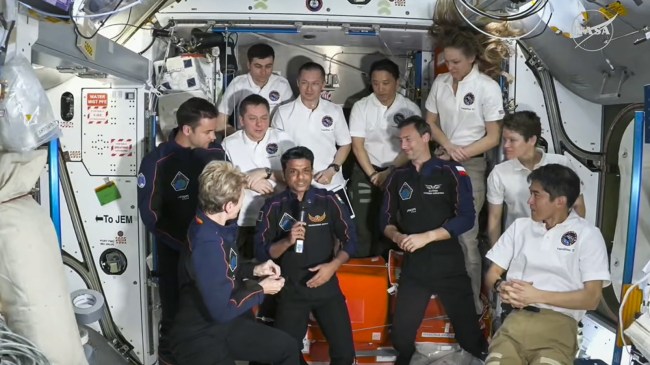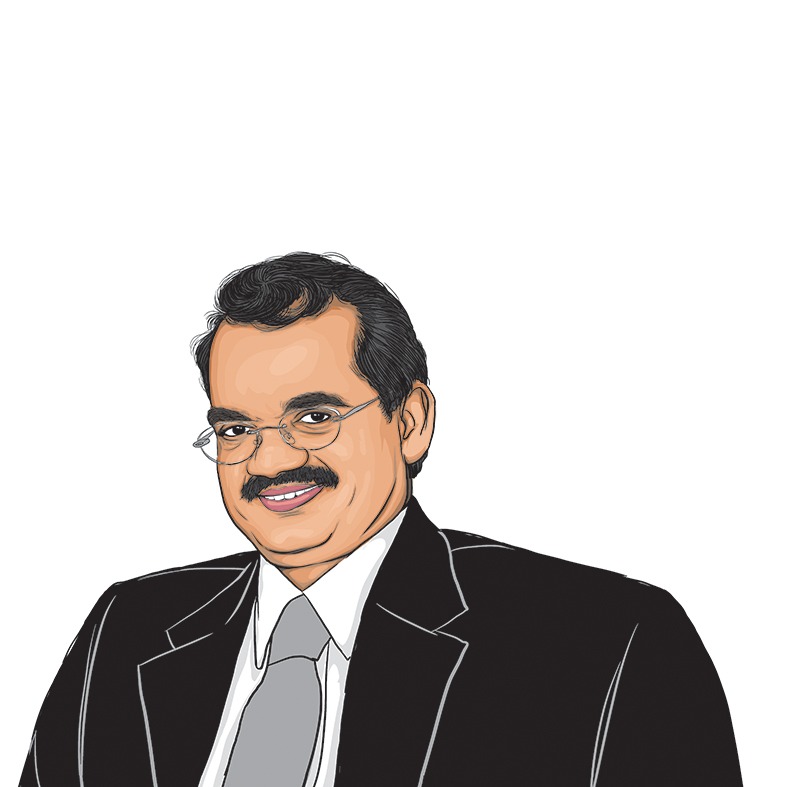Opinion Shubhanshu Shukla’s space odyssey: A glimpse into what the future holds for India
Shukla’s flight is both an opportunity and a precursor to indigenous human spaceflight, international cooperation
 Shubhanshu Shukla with other astronauts aboard the International Space Station. (Image source: @SpaceX/ PTI )
Shubhanshu Shukla with other astronauts aboard the International Space Station. (Image source: @SpaceX/ PTI ) The sight of a beaming Shubhanshu Shukla at the International Space Station (ISS) has to be one of the most indelible images of our time. Shukla’s journey opens a new chapter in India’s space programme — the era of human space travel. It builds upon a series of extremely impressive achievements of the Indian Space Research Organisation (ISRO) in the past decade or so, each of which resulted in it acquiring several critical new capabilities. Human spaceflight capability is the next achievement in this line.
The fact that Shukla’s journey has not come on India’s own mission does not take anything away from the significance of this moment. The value of his feat is a little different not just from the other first-time astronauts on the Axiom-4 mission, but also from many other astronauts who have been to space on similar missions earlier. That’s because it is not a one-off incident — it’s the beginning of a process. Shukla himself put it aptly when he said it was not the beginning of his journey but the beginning of India’s human spaceflight programme.
So far, citizens from about 50 countries have been to space. But just three countries actually have the capacity to send humans to space — the United States, Russia and China. Very soon, India will be the fourth. Shukla could very well have been on an Indian mission, powered by an Indian rocket and travelling in an Indian spacecraft. In fact, this is how it was meant to be. He, along with three others, were selected as astronauts for an Indian mission. The fact that the Axiom-4 mission materialised ahead of India’s Gaganyaan mission provided an excellent opportunity for ISRO to gain first-hand experience in space travel. This mission will lead to a lot of learnings not just for Shukla but also for ISRO that will be directly applicable to the crewed missions of Gaganyaan, the first of which is now scheduled for 2027. ISRO did well to grab this opportunity as it prepares to acquire its own human spaceflight capability.
This is not the only reason this mission is significant for India. The space sector has been going through a very exciting phase and is witnessing hectic activity. Private players, particularly in the US, are entering the field in a big way, and there has been a proliferation of space-based assets. The lower Earth orbits — 200 km to 2,000 km from the Earth — are the most active regions, primarily for commercial reasons. This is where most of the satellites and other assets are deployed. The ISS is also located in this band.
The longer-term goal seems to be to leave this area largely to private players to exploit for commercial activities and service the growing need for space-based data for applications on Earth. National space agencies can then focus their energies on more ambitious projects, like creating long-term settlements on the Moon, and possibly Mars. Human spaceflight capability is a crucial element of these plans. The US and China are aggressively advancing their plans for the Moon. India cannot afford to be left behind. The lunar surface is now seen as fit for resource extraction and as a platform to venture deeper into space. Soon, missions to the Moon, including crewed missions, will become as routine as satellite launches are today. Not having human spaceflight capabilities would make India dependent on other countries, and slow down its own plans for the Moon.
Having this capability has other advantages as well. Space is a sector that has seen close cooperation even between bitter political rivals like the US and Russia. The ISS is a very good example of it. But this can happen only when both sides bring useful capabilities to the table. It is a recognition of ISRO’s capabilities that NASA has entered into a strategic partnership with it, which includes cooperation on human spaceflight missions. India’s participation in the Axiom-4 mission was a result of this. It opens up the possibility of more India-US joint human space missions in the future. ISRO was not a passive participant in the Axiom-4 mission. It had sent a strong team to the US in the weeks leading up to the launch, which was closely involved with the launch operations.
We will see more such cooperation in the future. The ISS is already on extension and is due to be decommissioned by 2030. The ISS itself is an excellent model of international cooperation, with several countries contributing to its creation and operations. India is not a part of it. But a replacement for the ISS will most likely have India as a key partner. India has plans to build its own space station by 2035. It is not yet clear, but the possibility of India’s space station becoming a component of the future replacement for the ISS cannot be discounted. Space stations will increasingly become the hub of research activities and scientific experiments that require microgravity conditions, and priority access to these would boost domestic research and development.
The experience gained by Shukla can have more immediate benefits, and not just as inputs in the Gaganyaan programme. Shukla, and the three other astronauts selected for the Gaganyaan mission, had to undergo training in Russia because India does not have those facilities. Shukla and Prasanth Balakrishnan Nair, who was on standby for the Axiom-4 mission, also went through advanced training at a NASA facility. Their knowledge and experience can now be utilised to set up an advanced astronaut training facility in India, particularly since we are embarking on a human spaceflight programme. This facility can be opened on commercial terms to other countries as well.
The opportunities are immense, and Shukla’s flight just offers a glimpse into what the future holds for India’s space programme.
The writer is former director, ISRO Satellite Centre, Bengaluru




